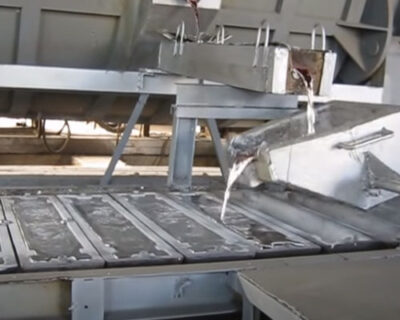In the aluminum recovery process, CFF aluminum melt filtration is the last purification process close to smelting and casting. Previously, the furnace was refining, lifting, and degassing outside the furnace. Although 60% to 80% of the inclusions and gases have been removed, the finer impurities are still dispersed in the melt, and new inclusions will be generated during the refining and flow process. Before casting, these fine phases must aggregate, grow, and separate. Compared with other purification methods, the CFF filtration method has become the preferred process for terminal impurity removal due to its advantages of low energy consumption, simple operation, low labor intensity, high impurity removal efficiency, and low pollution.
In the current production process of some foundries, the content of aluminum in the waste slag is generally 40% to 80%. The aluminum recovery from the waste slag should be paid attention to, and the foundry can recycle aluminum.
Aluminum has excellent properties and is hardly corroded during use. It has a large amount of use in civil and military applications. It has strong recyclability and is of great significance in the recovery of secondary resources.
The fundamental role of aluminum in ecological transformation and environmental protection is a fact. The production of primary aluminum requires stable energy: in order to obtain aluminum from scrap/recycling, 5% of the energy required to produce primary aluminum is sufficient.
For many reasons, recycling aluminum is a wise choice. Scrap aluminum production still maintains its high performance in terms of efficiency, decarburization and sustainability; this is possible because the scrap is remelted with chemical elements to produce alloys with high performance and purity, similar to recycled aluminum ingots from primary aluminum.
The characteristics of recycled aluminum and aluminum alloy scraps are: complex sources, different shapes, often inlaid, mixed with and coated with some non-aluminum metals and non-metals, the composition varies widely, and the surface is not clean. If these substances are not cleaned up before smelting, it will cause serious inhalation of the molten metal, resulting in pores, looseness and other defects in the subsequent solidification process. In addition, the mixing of some non-aluminum metals will also make the composition of the material unqualified and deteriorate the performance. The mixing of various non-metallic minerals will cause non-metallic inclusions, which will also reduce the performance and quality of the material.

